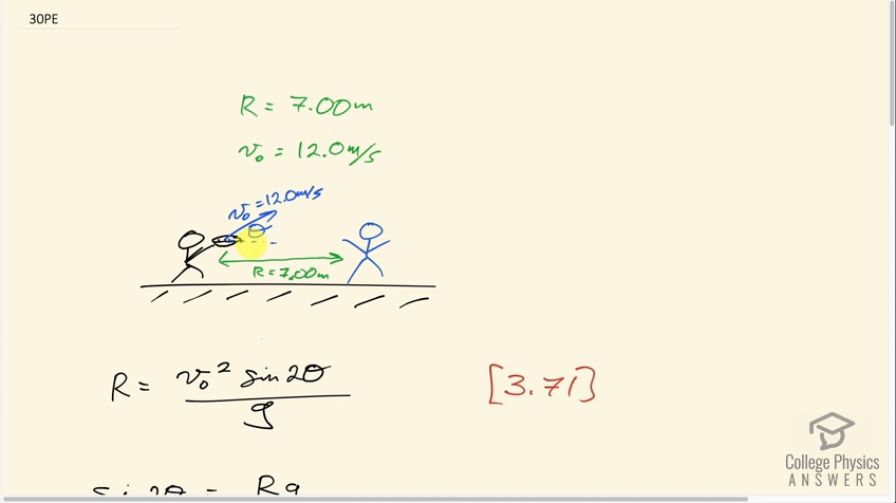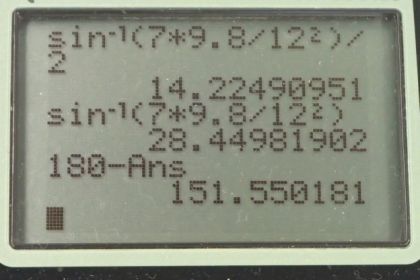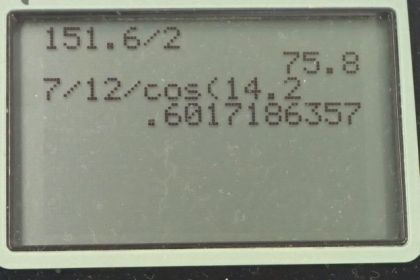Solution video
OpenStax College Physics, Chapter 3, Problem 30 (Problems & Exercises)

Calculator Screenshots
Comments
Why is gravity a positive value? I see in the end result, it should be a positive value or else we have a negative angle, but how are we supposed to know when we consider gravity a negative or positive value?
Hi georgeh, thanks for the question. The variable is meant to always be positive. It's the magnitude of the acceleration due to gravity. In some questions, sure enough, 'gravity' is negative, but that's represented by a negative sign explicitly in front of . When using one of the regular kinematics equations where you have a factor , where is the 'acceleration due to gravity, this would get replaced by (assuming you're working with a coordinate system where down is negative). I can totally see how this gets confusing, since is also commonly named 'the acceleration due to gravity'! The full, proper name for should be the magnitude of the acceleration due to gravity, but that's too wordy, so it's call 'acceleration due to gravity' for short.
The equation used here is the range equation. It is not one of the regular kinematics equations. It contains with no negative sign in front. is always positive since it's a magnitude.
Hope this helps,
Shaun
Hello Sean,
Thank you for your ongoing help. I have one question... at the end of this problem we divide x by Vox. (7/vox) with Vox being 12sin(14.2) to which I get 2.9437. Therefore, I plugged this in and took 7/2.9437 = 2.37797. I am unsure why you got 0.60s. I see on the image from your calculator that you did 12/cos(14.2)... can you explain why please?
Never mind I have been doing physics all day... simple mistake it is cos instead of sin.
No worries at all. Sometimes stepping away from a problem, then returning to it later, is the best problem solving tip if you've been working at problems for a while. The brain sometimes needs a rest, and it's always churning away at finding solutions even when you're doing other things like going for a walk.
I have a question regarding the inverse sin function. I have tried many different ways to type the equation into my calculator, but I am unable to get 14.2 degrees. When I hit the inverse sin function and put in (68.6/12) it keeps giving domain error. Is there a way to set up the equation to avoid this? Thanks.
I am confused why in part C the equation used needs the initial velocity of X. Wouldn't using the equation x= initial position of x + ( initial velocity multiplied by time) + (1/2 multiplied by acceleration multiplied by time squared) also work?
Hi william, thank you for your question. If I understand your question correctly, you're wondering why in the solution I use the x-component of the initial velocity, vs your suggestion to use the initial velocity of 12.0 m/s given in the problem statement? The equation applies only to one dimension, or in other words - to one axis. Every part of the equation needs to be concerned only with the components in that dimension, which in this case is the x-direction. We need the x-component of the initial velocity since the equation concerns only the x-direction.
I hope that helps,
Shaun





